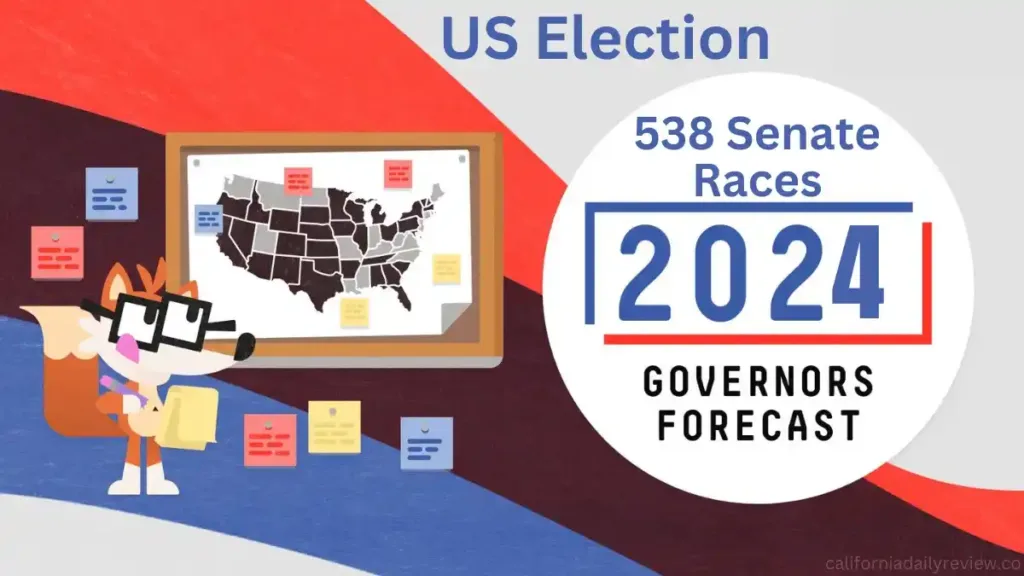The political landscape constantly evolves, with 538 being a key player in political forecasting. Their data-driven approach to predictions is crucial for staying informed about upcoming elections. This article delves into the fascinating world of 538 Senate Race predictions, exploring their methodology and the significance of these projections.
Understanding 538 Senate Races Predictions:
#1. The Data-Driven Approach:
538 approach to Senate race predictions is firmly rooted in data analysis. They employ a combination of polling data, historical trends, and demographic information to create a comprehensive model. By incorporating various factors, the predictions aim to provide a nuanced view of the political landscape.

#2. Poll Aggregation:
Central to 538’s predictions is the aggregation of polls. The model considers the reliability of different polls, weights them accordingly, and synthesizes the information to produce a more accurate representation of public opinion. This meticulous process ensures that the predictions are not swayed by outliers or biased data.
#3. Forecast Uncertainty:
Recognizing the inherent unpredictability of politics, 538 doesn’t shy away from acknowledging forecast uncertainty. Their model provides a range of possibilities, indicating the likelihood of different outcomes. This transparency is crucial for consumers of political forecasts, offering a more realistic understanding of the potential scenarios.
The Impact of 538 Senate Race Predictions:
#1. Informed Voting:
As voters, understanding the predictions for 538 Senate races can guide our decisions. Knowing which races are considered competitive or leaning towards a particular party allows voters to make informed choices that align with their values and preferences.

#2. Campaign Strategies:
Political campaigns closely follow forecasts to strategize their efforts. Candidates can adjust their messaging and allocate resources based on the competitiveness of a race. The insights provided by 538’s predictions influence the campaign trail dynamics, making it a valuable tool for political strategists.
#3. Media Coverage:
The media plays a pivotal role in shaping public opinion, and coverage of 538 Senate race predictions contributes to the narrative surrounding elections. Journalists often refer to these predictions to provide context and analysis, further amplifying the impact of 538 forecasts on public perception.
Challenges and Criticisms:
#1. Over-Reliance on Polls:
While 538’s model is robust, it is not without criticisms. Some argue that the predictions heavily rely on polling data, which can be subject to biases and inaccuracies. Addressing these concerns is crucial for enhancing the accuracy of political forecasts.

#2. Dynamic Political Landscape:
The fluid nature of politics poses a challenge for any predictive model. Unexpected events, shifts in public sentiment, or last-minute developments can significantly alter the course of an election. 538’s model strives to adapt to these changes but is not immune to the complexities of the political landscape.
Future Developments and Trends:
1. Advancements in Modeling Techniques:
The field of data science is continually evolving, and so are predictive modeling techniques. 538 is likely to incorporate advancements in machine learning and statistical modeling to refine their predictions further. This constant evolution ensures that their forecasts remain at the forefront of accuracy.
2. Increased Focus on Local Factors:
As political landscapes vary across states, there may be an increased emphasis on local factors in predictions. Fine-tuning models to consider state-specific dynamics could provide a more nuanced understanding of Senate races, acknowledging the diversity within the broader political landscape.

Conclusion:
538 Senate race predictions are a vital tool for navigating the intricate world of American politics. Their data-driven approach, transparent methodology, and acknowledgment of uncertainty contribute to the reliability of their forecasts. As voters, candidates, and political enthusiasts, understanding the significance of 538 Senate Race predictions allows us to engage more meaningfully with the democratic process, fostering a deeper understanding of the dynamics that shape our political future.





